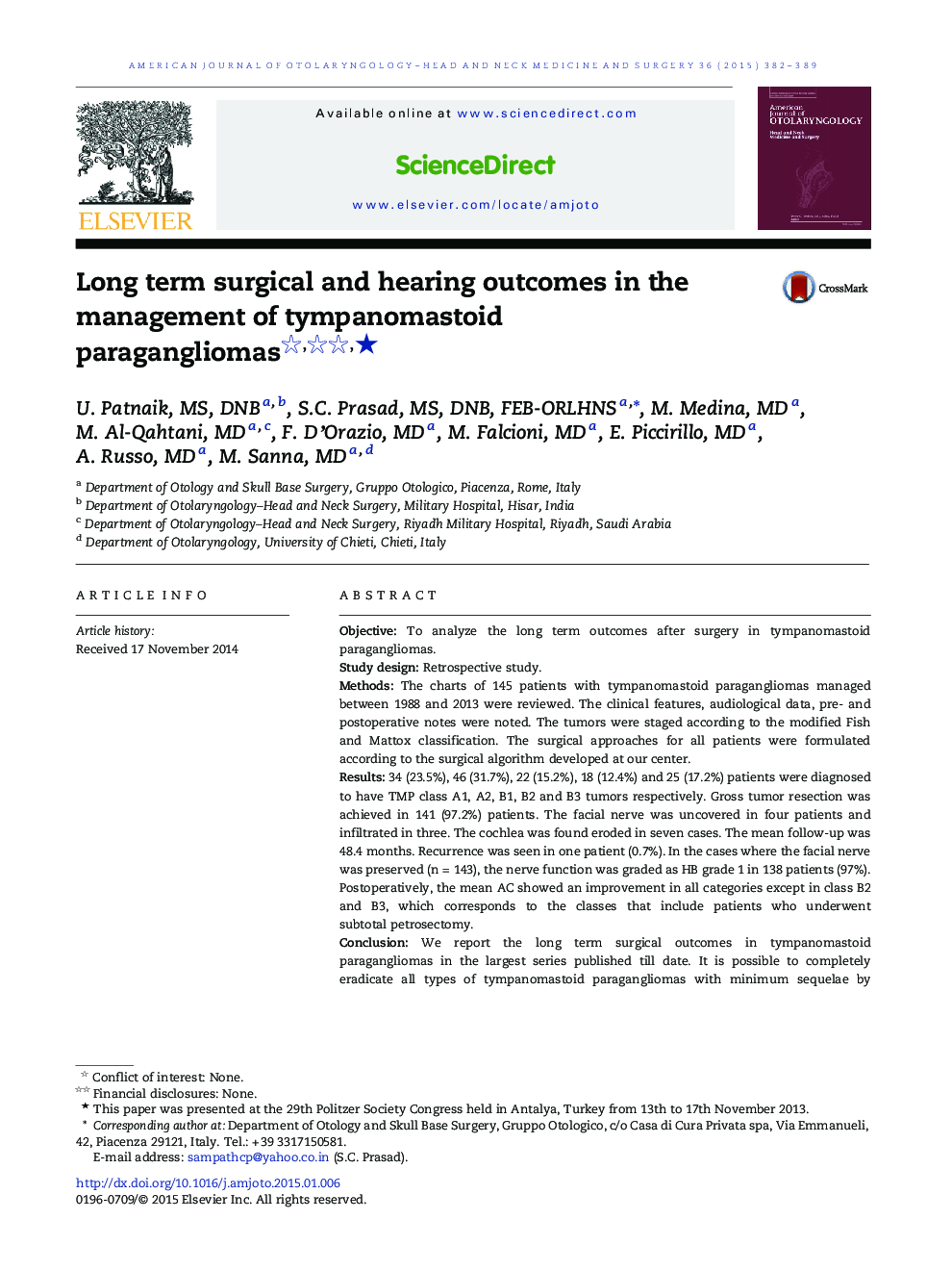| Article ID | Journal | Published Year | Pages | File Type |
|---|---|---|---|---|
| 4103540 | American Journal of Otolaryngology | 2015 | 8 Pages |
ObjectiveTo analyze the long term outcomes after surgery in tympanomastoid paragangliomas.Study designRetrospective study.MethodsThe charts of 145 patients with tympanomastoid paragangliomas managed between 1988 and 2013 were reviewed. The clinical features, audiological data, pre- and postoperative notes were noted. The tumors were staged according to the modified Fish and Mattox classification. The surgical approaches for all patients were formulated according to the surgical algorithm developed at our center.Results34 (23.5%), 46 (31.7%), 22 (15.2%), 18 (12.4%) and 25 (17.2%) patients were diagnosed to have TMP class A1, A2, B1, B2 and B3 tumors respectively. Gross tumor resection was achieved in 141 (97.2%) patients. The facial nerve was uncovered in four patients and infiltrated in three. The cochlea was found eroded in seven cases. The mean follow-up was 48.4 months. Recurrence was seen in one patient (0.7%). In the cases where the facial nerve was preserved (n = 143), the nerve function was graded as HB grade 1 in 138 patients (97%). Postoperatively, the mean AC showed an improvement in all categories except in class B2 and B3, which corresponds to the classes that include patients who underwent subtotal petrosectomy.ConclusionWe report the long term surgical outcomes in tympanomastoid paragangliomas in the largest series published till date. It is possible to completely eradicate all types of tympanomastoid paragangliomas with minimum sequelae by choosing the correct surgical approach to achieve adequate exposure for individual tumor classes as described in our classification and algorithm.Level of evidenceIIb.
